

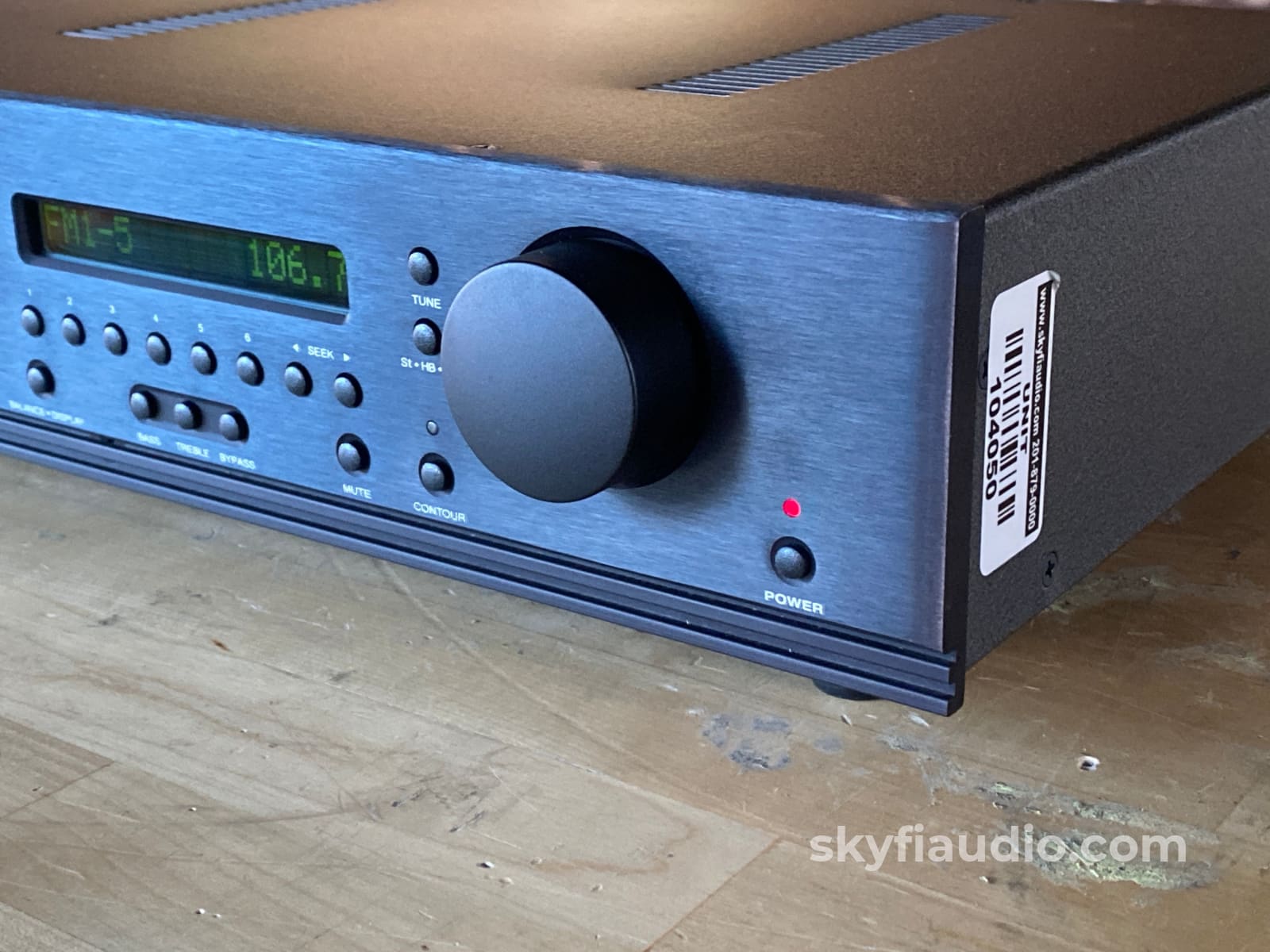

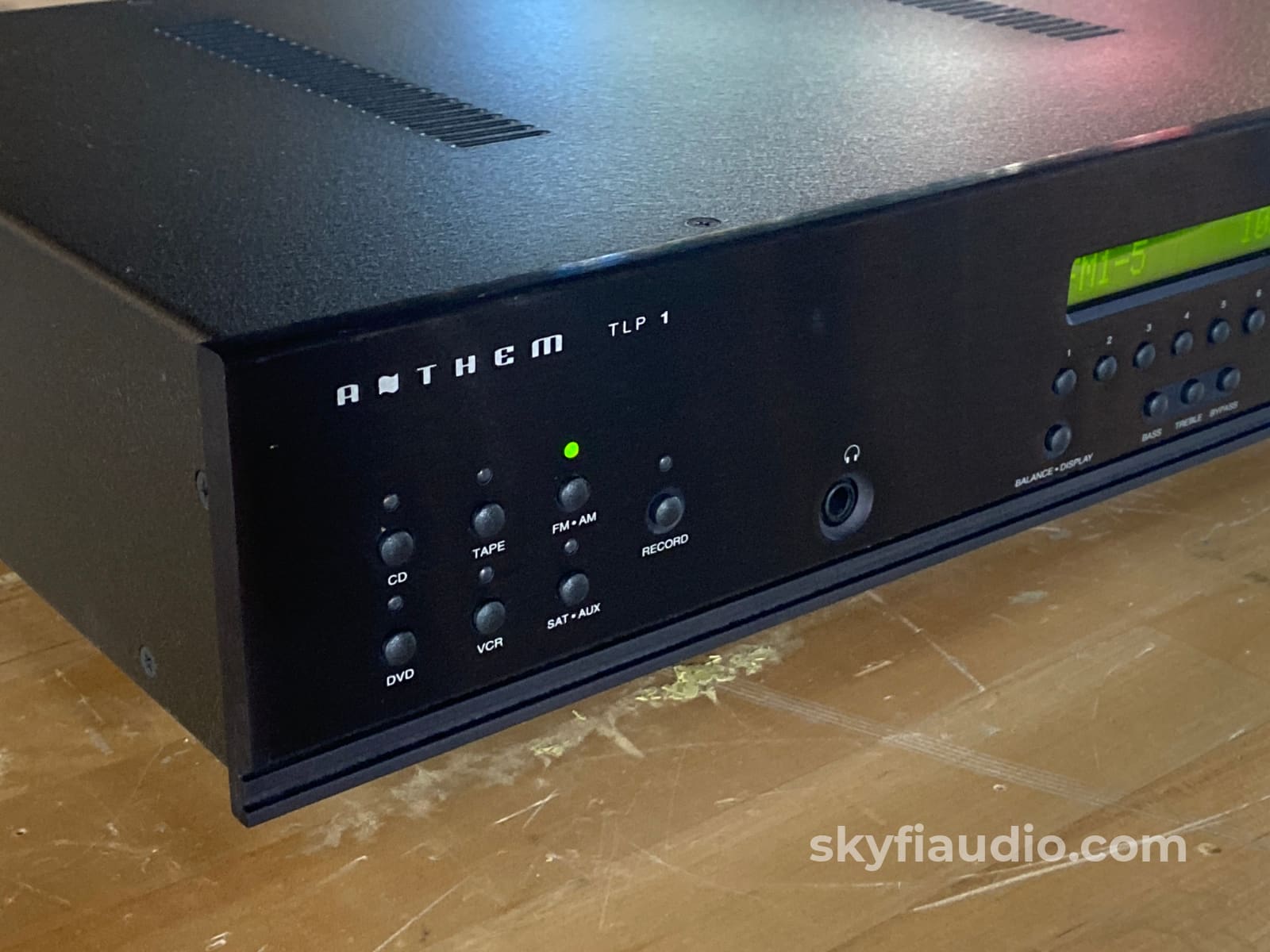

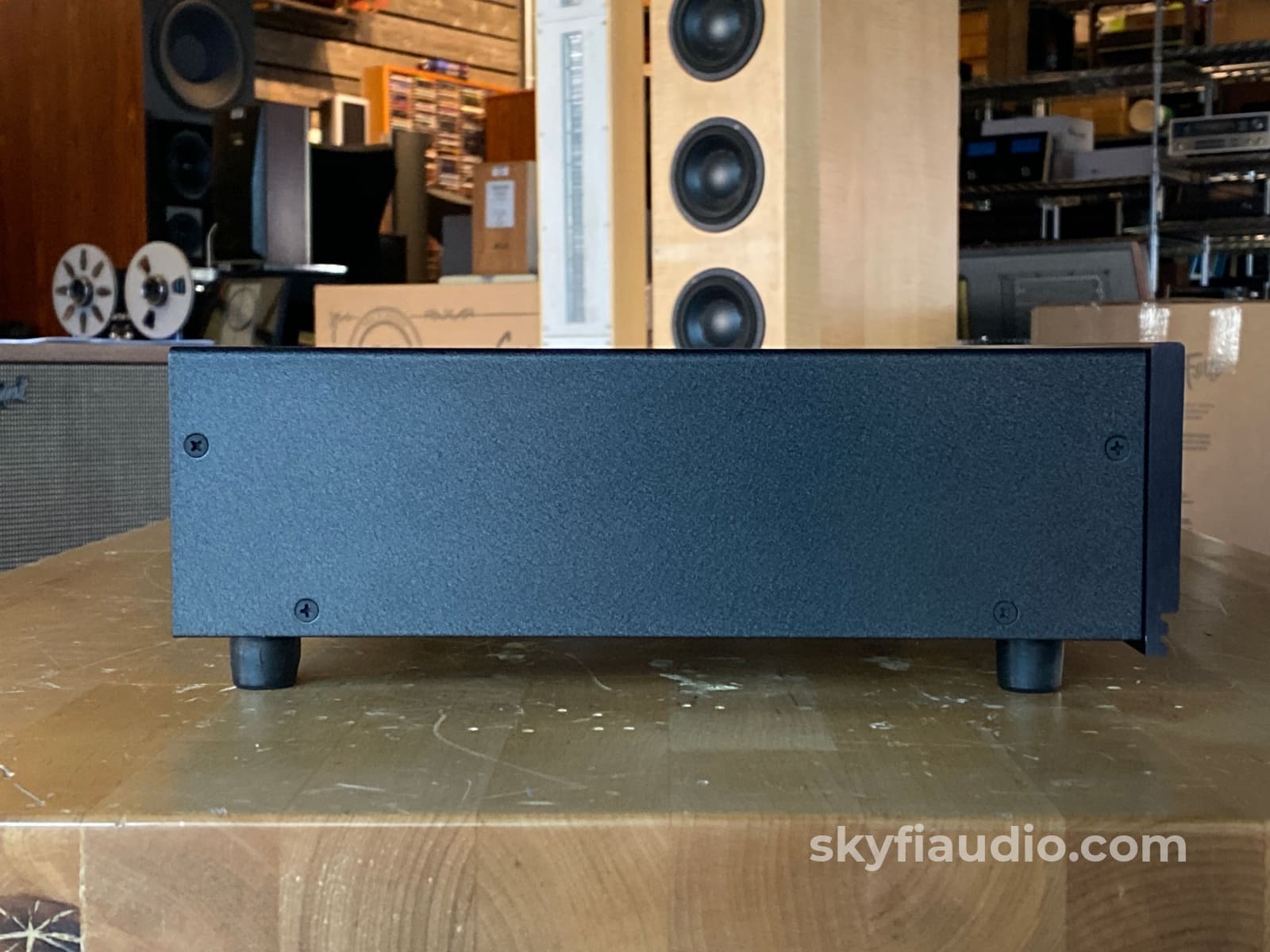

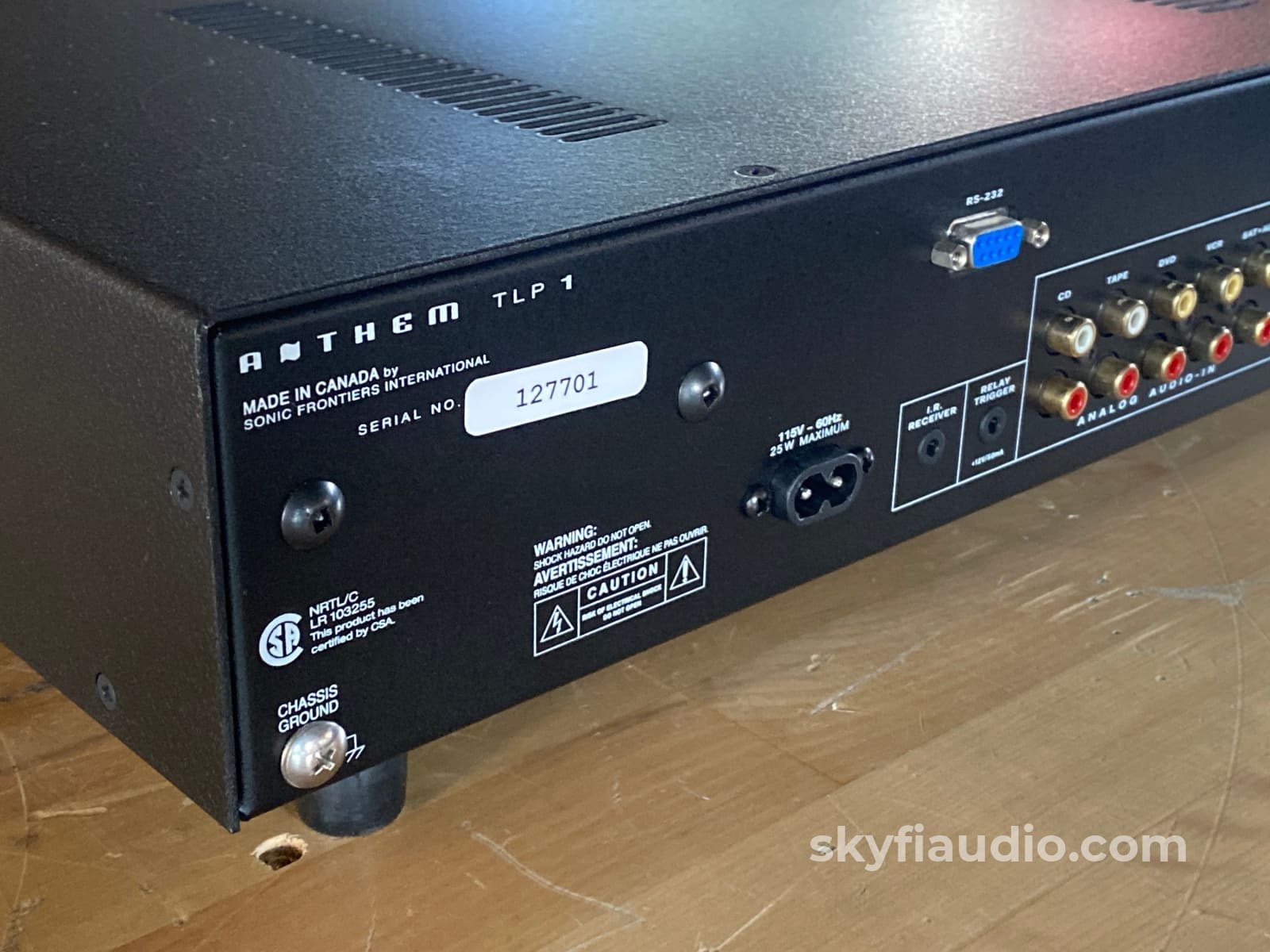
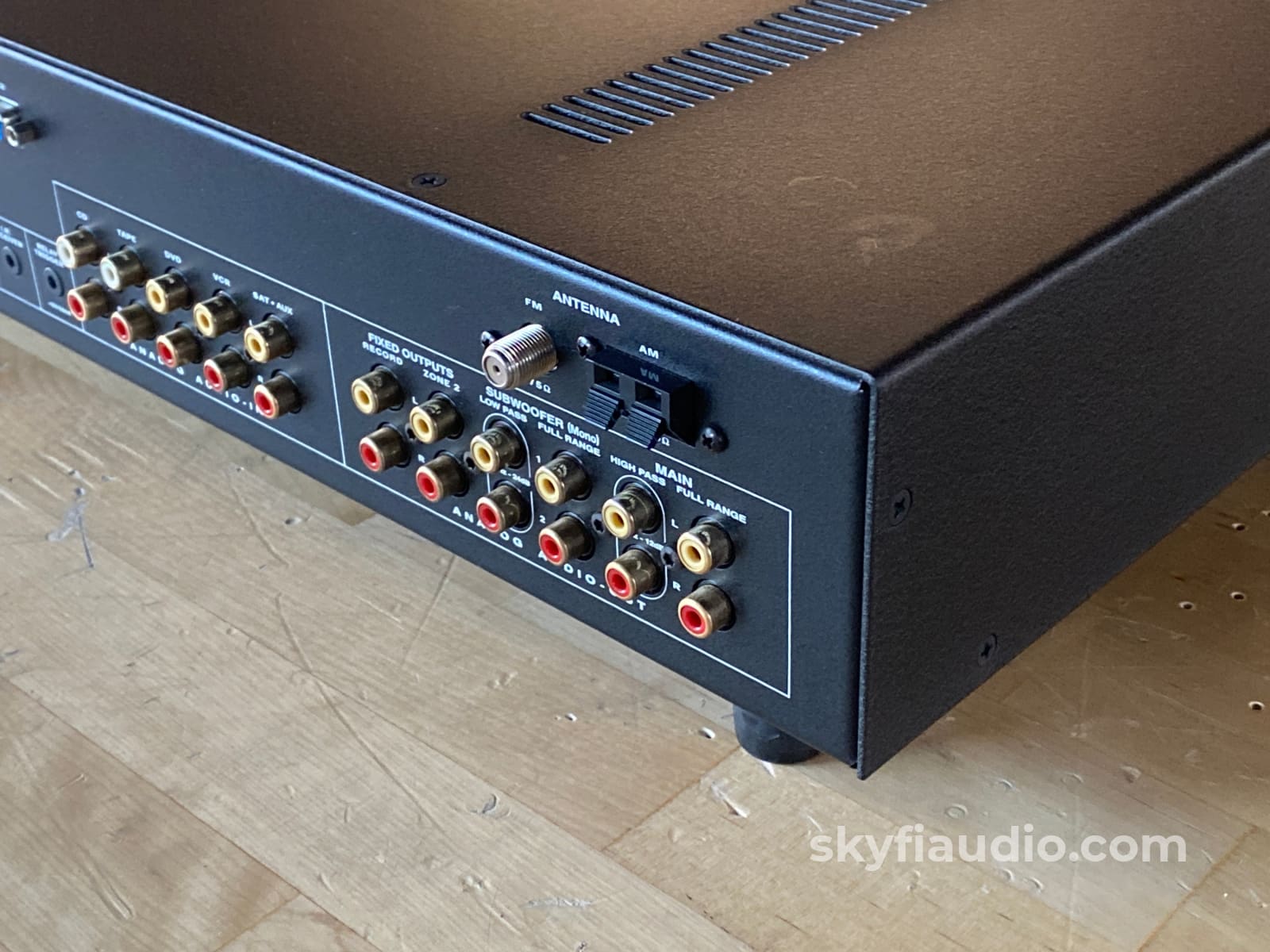
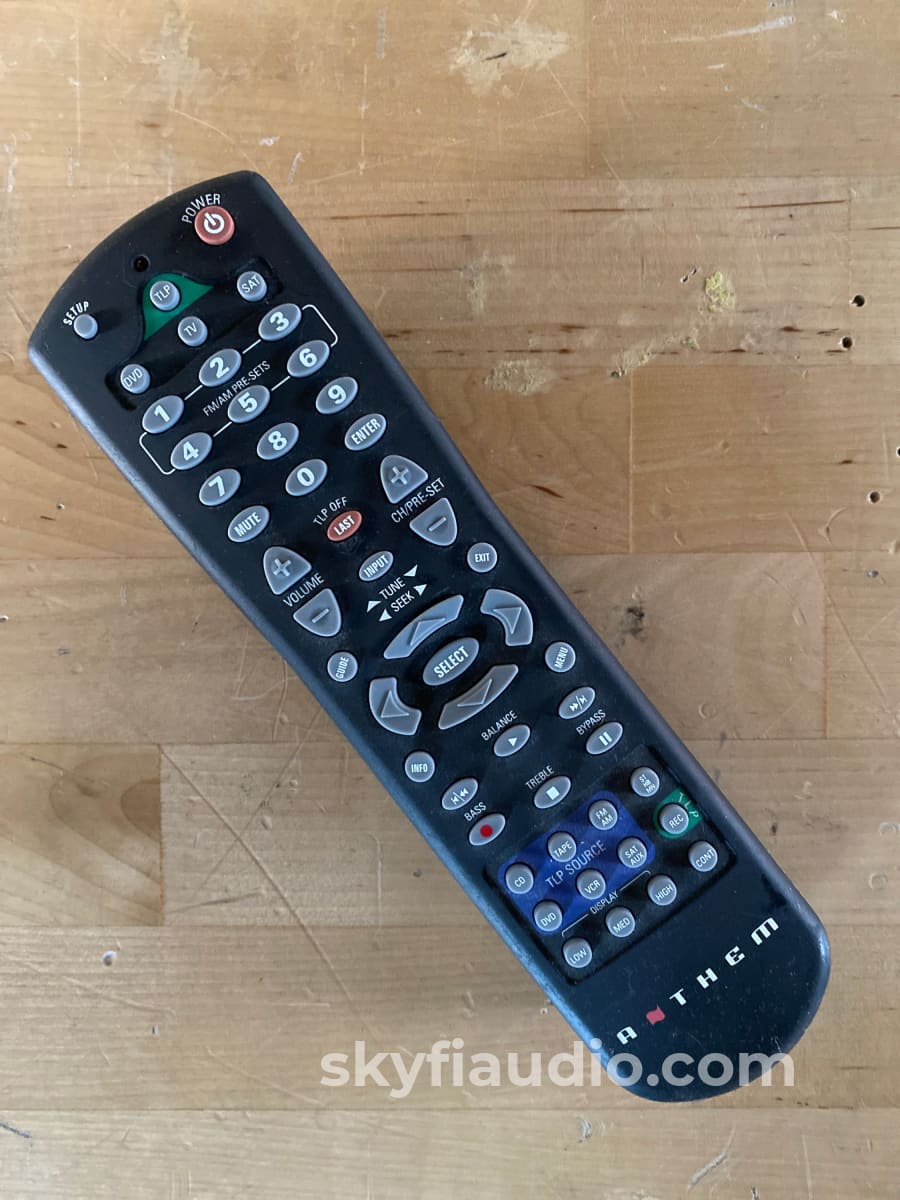
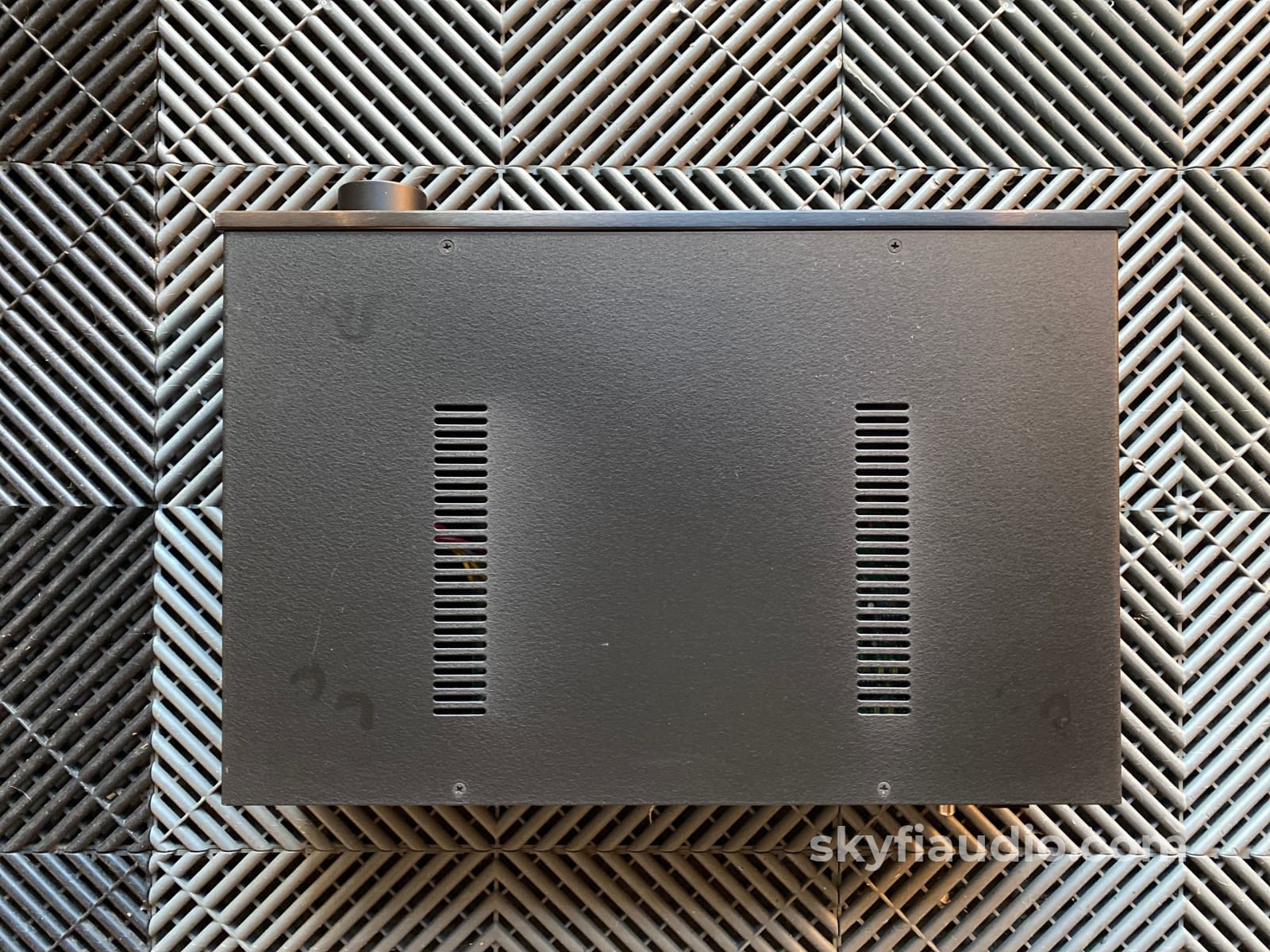
Anthem TLP 1 Stereo Tuner Preamplifier
Free Shipping on Most Electronics - Excludes Speakers and Items Requiring Freight - Contiguous U.S. Only
Pickup currently unavailable at SkyFi 479

Anthem TLP 1 Stereo Tuner Preamplifier
SkyFi 479
479 South Broad Street
Glen Rock NJ 07452
United States
Simple and versatile preamp tuner which is a great value.
Fully tested and working properly. Includes remote.
From a SoundStage Review written by John Crossett:
Comparisons
When I compare the features offered by the TLP 1 versus those of my $2495 Audio Research SP16, a 2002 Reviewers’ Choice product, I am amazed that Anthem can package so much for so little. While both preamps offer remote control, the Anthem’s is more complete, and a learning remote to boot. I was also impressed with the Anthem’s inclusion of a tuner, tone and balance controls, and multiple output jacks. My SP16, on the other hand, countered with its phono stage, stereo/mono switching, and tube circuitry.
Conclusion
There are times in a reviewer’s life when his conceptions regarding the hierarchy of equipment are put to the test. Listening to the Anthem TLP 1 was one of those moments for me. Here is an inexpensive preamp loaded with features and offering easy-to-enjoy sonics that went far beyond what I expected. Sure, there are tradeoffs Anthem had to make to bring the TLP 1 in at its price point, but they were intelligently made in my opinion. The value offered by the Anthem TLP 1 is well off the charts, especially when considering the features offered at such an affordable price.
Products such as the Anthem TLP 1 offer hope to consumers who want to build a versatile high-end system without having to spend an arm and a leg. If this description fits you, then make a visit to your local Anthem dealer to find out that the terms high value and high end are not mutually exclusive.
Specifications:
• Two Channels
• Five single ended inputs, 6 outputs (see article for details)
• 20 Hz to 20 kHz, ± 0.2 dB; 1Hz to 120 kHz +0, -3 dB
• Input Impedance: 25K Ohms
• Output Impedance: 300 Ohms
• Max Input Voltage: 4v
• Rated Output: 1v into 100 Ohm load
• Max Output: 3.3v
• Size: 17.25" x 4.125" x 11.25"
• Weight: 14 Pounds
Recommended Cables:
Kimber Kable - RCA Interconnects - Better
Kimber Kable - RCA Interconnects - Best
The SkyFi Testing Process for Preamplifiers:
We start with a visual inspection of all internal components to make sure that there are no signs of heat stress or damage. Capacitors are checked for telltale signs of predictive failure including bulging, shrunken wrappers, or physical leakage. We also inspect the PCB’s for discoloration from resistors or transistors that may have been running hot. On vintage units we often spot check select capacitors for value and ESR.
When we first power on a preamplifier we connect its RCA output to a Sencore PA81 Power Analyzer which simulates real world loading conditions and gives us an oscilloscope interface. The first order of business is checking that the volume control works smoothly throughout its entire range with acceptable channel balance. This is accomplished by feeding a 1KHz sine wave into one of the preamp’s line level inputs while monitoring the preamp’s output on an oscilloscope. We then switch to a 1KHz square wave to test the tone controls, loudness function, and filters where applicable. During this step we are watching for equal alteration of the test signal by both channels. This also helps us identify dirty controls that will need treatment. Once the basic line stage functions are verified, we test each input individually. This is especially important for devices that use relays to select their sources. If the preamp is equipped with a phono stage we test that as well. We use an inverse RIAA filter which allows us to feed a reference test signal into the phono input with the proper RIAA equalization and level. A square wave or sine sweep is used to verify that the device’s phono stage is faithfully reproducing the RIAA curve. If the preamp under test has balanced inputs and/or outputs these are tested as well.
We finish up our bench testing with a listening test with our bench amplifier and reference speakers. During this test we check for hum or hiss that may not have shown up in earlier testing. We also check that all of the tone controls and filters perform as expected. If the preamplifier has remote control functions these are also tested. Preamps with tube circuits or complicated power supply topologies are connected at our long term test rig for extended stress testing under real world conditions.
The SkyFi Testing Process for Tuners:
We start with a visual inspection of all internal components to make sure that there are no signs of heat stress or damage. Capacitors are checked for telltale signs of predictive failure including bulging, shrunken wrappers, or physical leakage. We also inspect the PCBs for discoloration from resistors or transistors that may have been running hot. On vintage units we often spot check select capacitors for value and ESR. Vintage analog tuners also have moving parts related to the tuning gang and dial string. These parts are inspected for smooth operation.
If the unit passes visual inspection it is bench tested for a handful of key performance parameters using a Sencore SG80 AM/FM Stereo Analyzer. The SG80 allows us to “simulate” an ideal radio station using precision test signals instead of music. This device, in conjunction with an oscilloscope allows us to properly evaluate the following parameters:
1. AM Reception (Where Applicable)
2. FM Mono Reception & Tuning Meter Function
3. FM MPX Reception (Stereo)
4. Dial Tracking - How accurately the tuner dial or display indicates the actual frequency of the broadcast being received.
5. Stereo Separation - A properly working stereo tuner will have minimal crosstalk between the left and right channel.
6. Sensitivity & Signal Strength Meter Function - By lowering the output of the SG80 we can simulate weak stations and determine how well the tuner will be able to pull in weak distant stations. This adjustment also helps us verify signal strength meter function.
If the tuner has acceptable performance related to the parameters above we connect the unit for listening tests with a simple dipole antenna. We listen for audio reproduction quality of local stations and evaluate how many stations the tuner can receive while we sweep through the dial. We are looking to verify that the tuner can decode stereo on strong local broadcasts and pick up a wide variety of local stations at the bottom, middle, and top of the frequency band. At this point we also test convenience features such as muting, filters, built in oscilloscope function, etc.
We finish up with an extended listening test on our long term test rig. We tune in a strong local station and monitor for drift over a 2-3 hour period.
|
Item |
Included |
|
Original Box |
Not Included |
|
Manual |
Not Included |
|
Remote |
Yes Included |
|
Cables |
Yes - Power Only |
|
Physical Condition (Info Here) |
7 / 10 |
|
Working Condition |
10 / 10 |
Choose options












